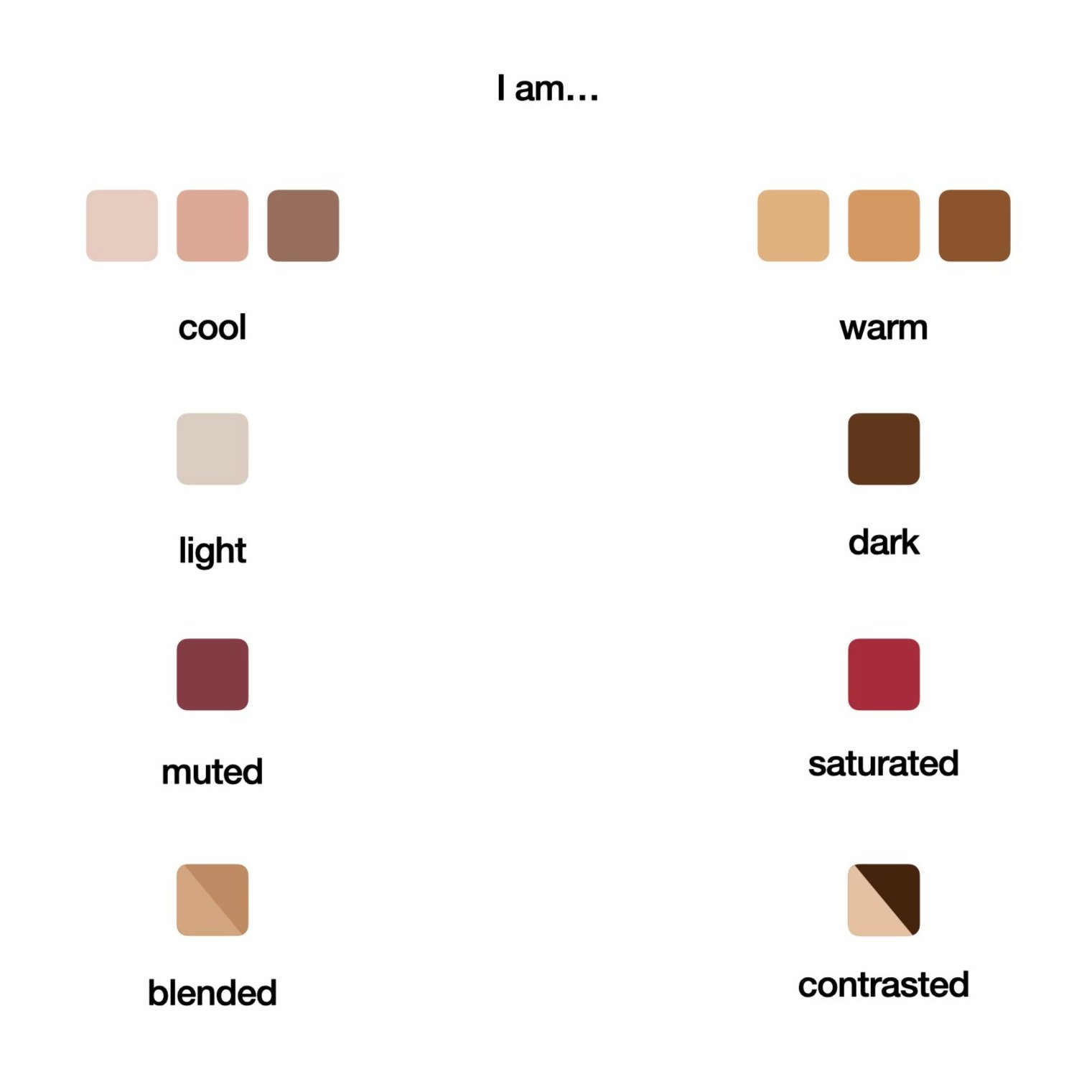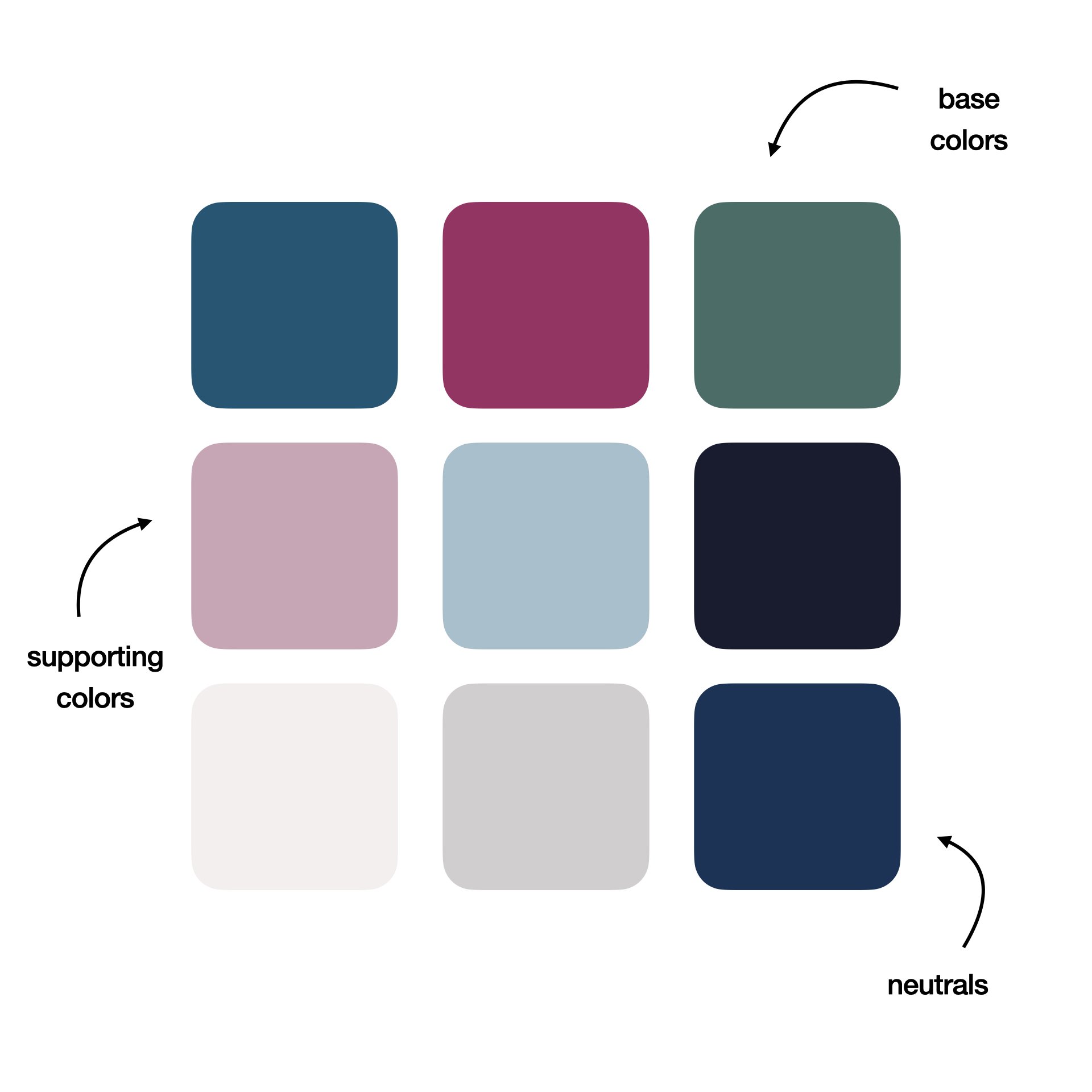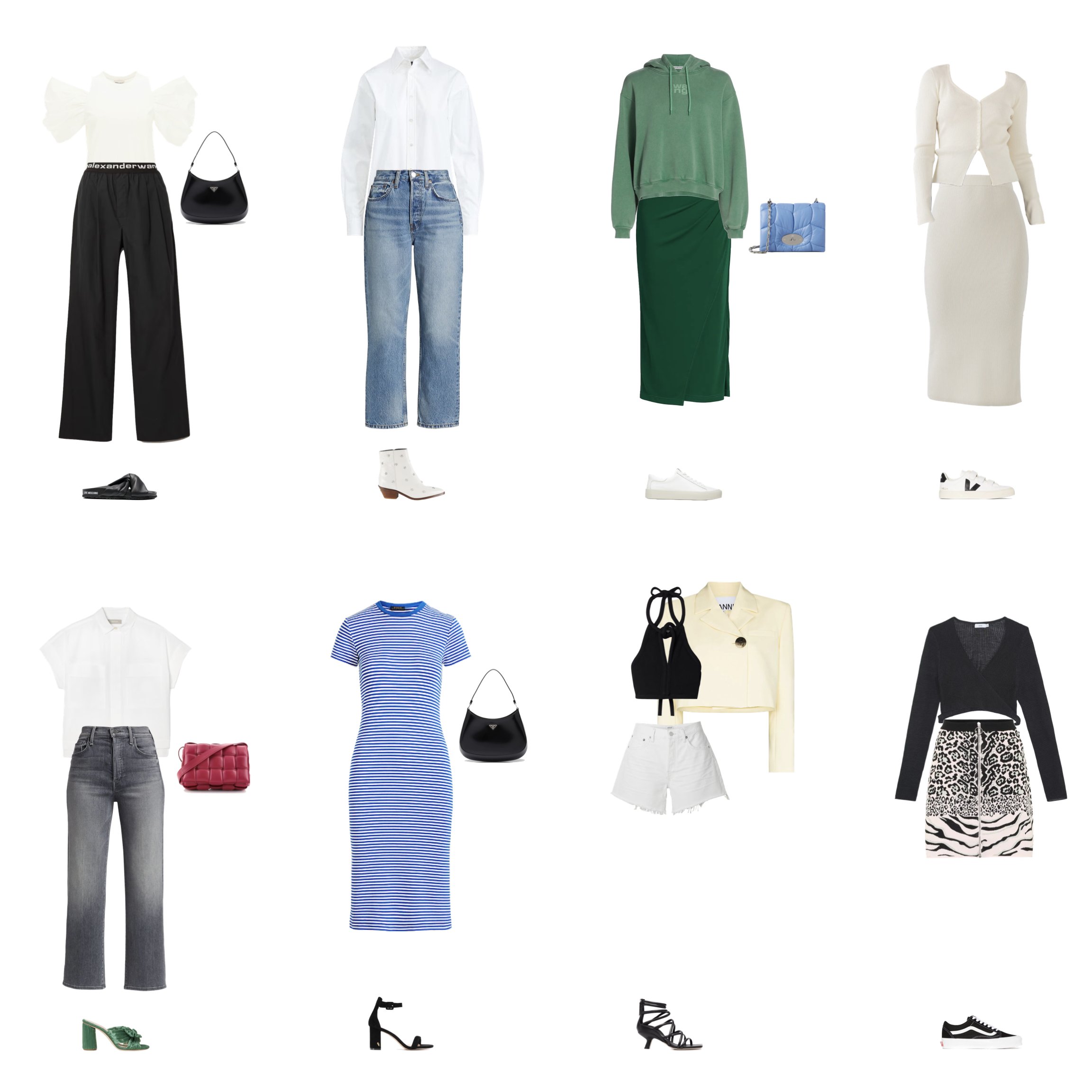How to Create the Perfect Color Palette for Your Wardrobe
Do you want to learn how to create the perfect wardrobe color palette? I'll show you how to create a color palette for your wardrobe that will be harmonious with your natural beauty and NOT BORING! Download the worksheet below if you’d like to get some extra color guides and a template to record your color palette for future reference.
WORKSHEET // Your Wardrobe Color Palette
01 // Start with Your Natural Beauty
As we’ve discussed in previous blog posts, knowing your undertone is the first step to creating a flattering color palette that will bring out the best in you. Your undertone will inform whether you should choose warmer (more yellow) or cooler (more blue) colors for your color palette. If you’re not sure about your undertone, check out this post first.
RESOURCE // What is My Undertone?
It is also helpful to understand your own natural coloring in terms of value, intensity, and contrast. To perform your own personal color analysis, take a look at this post before moving onto step 2.
RESOURCE // How to Find Your Best Colors According to Color Theory
Identify your Color Character
Warm or cool? Light or dark? Muted or saturated? Blended or contrasted? If you’re not sure, watch this helpful video!
02 // Shop Your Closet
Now that you’ve started to understand how to describe your natural coloring, take a look through your closet and pull out 1-5 items in colors that you really enjoy wearing. It’s useful to note which neutral colors you enjoy wearing as well, but try to choose colors other than black, white, gray, or beige for now. How do they compare to your undertone? Try each item on and evaluate how well they flatter your skin tone. And remember, just because you have a warm undertone doesn’t mean you can’t wear green, blue, or purple - your undertone simply informs which versions of these colors will look best on you. For example, lime green, teal blue, and red-violet would be warmer versions of green, blue, and purple. Now, take the items of clothing which best suit you and note their colors. This is a great place to start for your capsule wardrobe color palette. Don’t worry if you only found one color that you like, the following steps will help you find additional colors to round out your palette.
What You Love
What colors do you love wearing right now? Which ones do you already have in your wardrobe? This is the best place to start for your capsule wardrobe color palette!
03 // Complete Your Base
Next, it’s time to complete your set of base colors. If you’ve chosen more than one color from the previous step, do your colors mix and match well with one another? If not, you may want to eliminate some of the colors from your palette, or make adjustments. For example, one of your colors may have a clashing undertone when compared to the others. If you’d like to keep that color in your palette, consider swapping it for a similar hue within your undertone family.
If you would like to add more colors to your base, a great place to start would be to take one color you know you love and choose an analogous color within the color family of your natural undertone. Analogous colors are those that are close to each other on the color wheel. For example, if you love emerald and you have a cool undertone, you could choose blue-green teal color which will naturally harmonize with both emerald and your natural undertone. Adobe Color is an awesome free online tool that you can use to play around and find analogous color palettes if you’re not sure where to start!
RESOURCE // Adobe Color
Once you have 2-3 colors in your base palette that mix and match well together, continue to step 4. The number of colors in your base is completely up to you, but I would encourage you to choose at least one non-neutral color to include in your color palette at this stage.
Your Color Spring board
Use the colors that you know you love as a spring board for your base palette! Add and subtract colors to refine as needed. Analogous colors are a great place to start if you want to add more colors to your base.
04 // Choose Supporting Colors
Now that you have your base colors, let’s choose some supporting colors. Here is where the concepts of value and intensity really come into play. If your natural hair is on the darker side and you have a more saturated complexion, take your base colors and add pure black to them to create deeper shades of your base color palette. If your natural hair is on the lighter side and you have a saturated complexion, take your base colors and add pure white to them to create lighter tints of your base colors. If your hair is dark and your complexion is muted, add dark gray to your base colors to create deeper tones of your base colors. If your hair is light and your complexion is muted, add light gray to your base colors to create lighter tones of your base colors. This will be your set of supporting colors. Feel free to pick and choose which ones you would like to add to your palette! I would recommend you choose at least one supporting color before moving onto the final step.
WORKSHEET // Your Wardrobe Color Palette
Amplify your Natural Beauty
Supporting colors are meant to amplify your natural beauty by taking colors you love and bringing them closer to your natural coloring - whether that be lighter, darker, softer, or brighter.
05 // Select Your Neutrals
Finally, let’s pick out some neutrals. I like to leave neutrals for last because, especially in the capsule wardrobe community, we usually overbuy our neutrals at the expense of color. When we choose our non-neutral colors first, it’s easy to choose the right neutrals. Neutral colors are traditionally black, white, gray, navy, beige, and earth tones. I would recommend choosing neutrals based on your undertone, value, and contrast. For example, if you are highly contrasted with dark hair and a warm undertone, you may want to add a warm white which will allow you to create highly contrasted outfits when combined with the darker shades that you’ve chosen in the previous steps. On the other hand, if you have low contrast and light coloring, you may want to avoid adding stark black to your capsule as it may be too harsh in comparison to your light and soft base colors. Choose a soft gray or beige instead to complement your natural value and contrast.
your Best Neutrals
Choosing neutrals is easy when you leave it for last! Choose your neutrals based on your undertone, value, and contrast.
06 // Visualize Your Color Palette
Your capsule wardrobe color palette is complete! How did it turn out? Use this color palette worksheet to record your color palette for reference next time you want to add a new item to your capsule. I’d love for you to share your color palettes with me on Instagram - just use the Instagram template in the color palette worksheet and tag me in your post, @waardrobe_!
It may also be helpful to create a Pinterest board which represents your color theme. Check out my Pinterest to find inspiration boards for every color!
RESOURCE // Get the Color Guides!
















FINALLY get your body type!